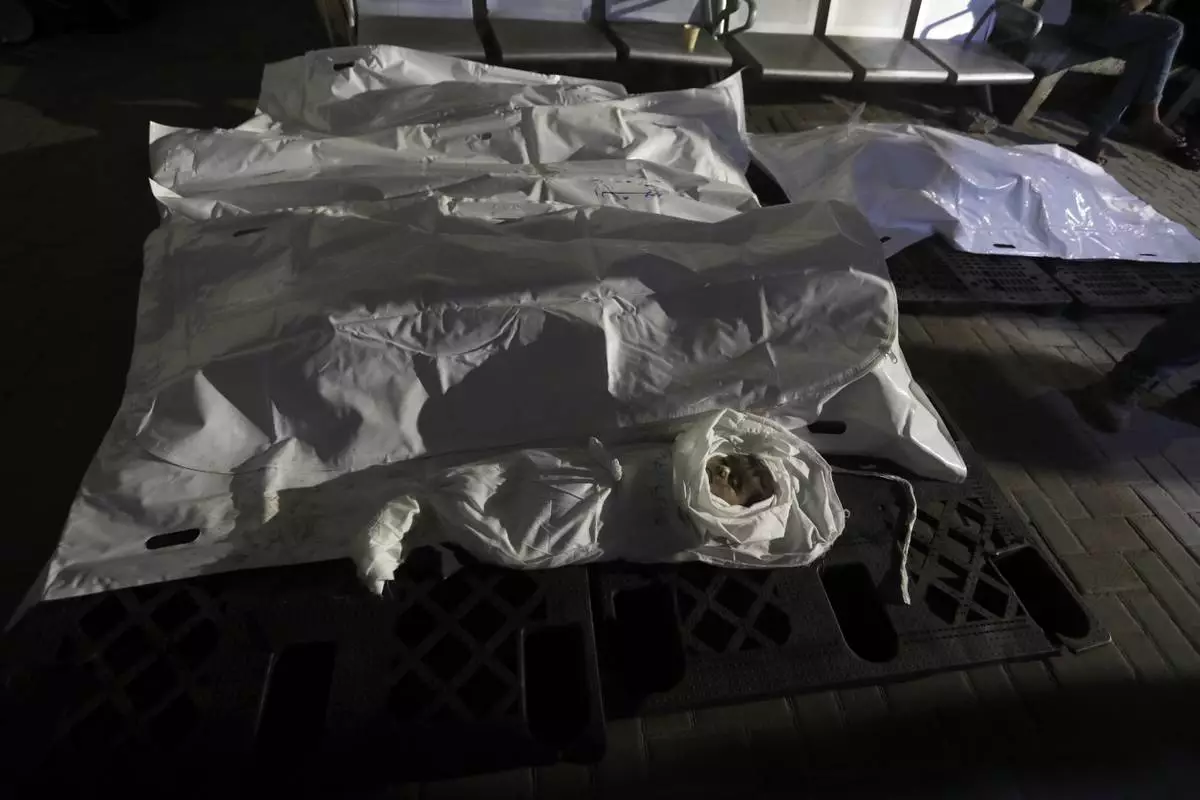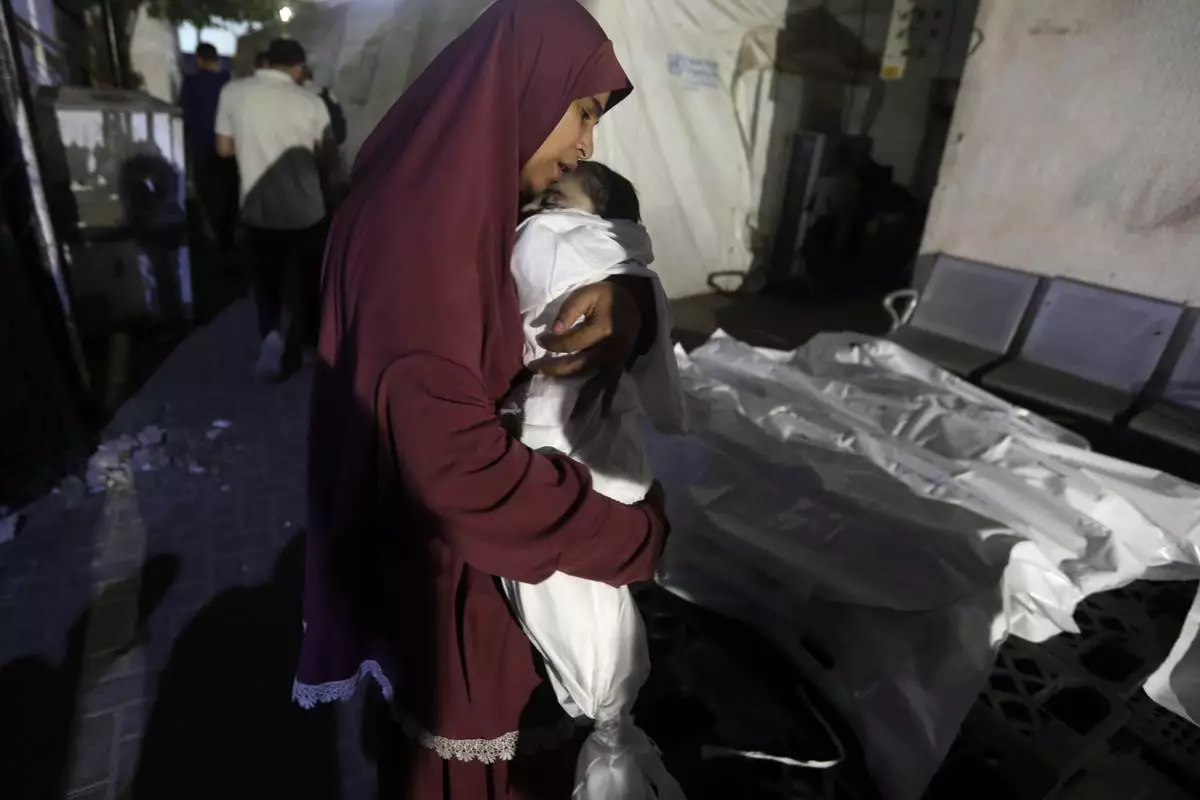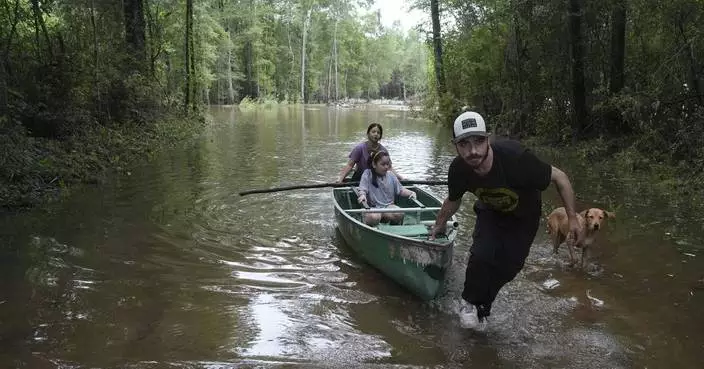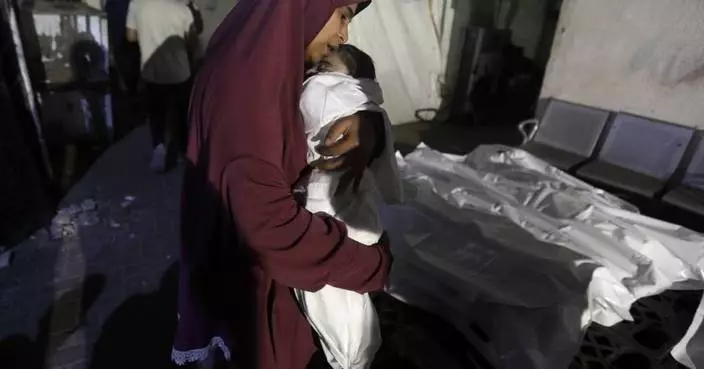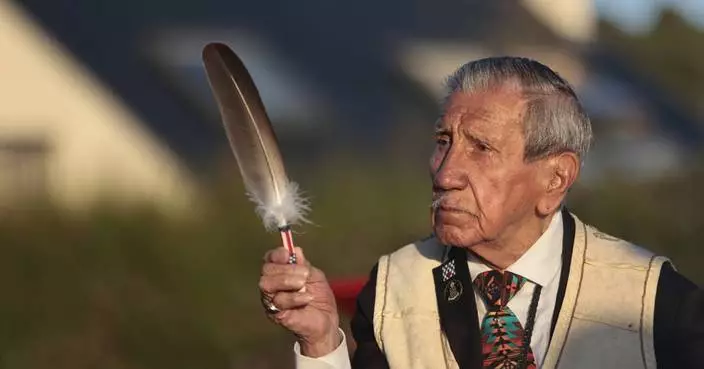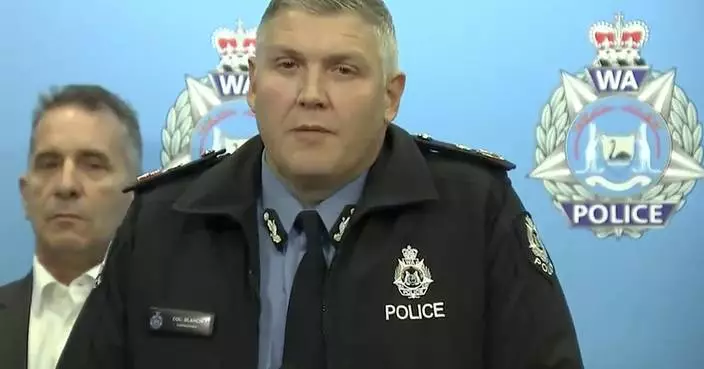MADISON, Wis. (AP) — Lake sturgeon don't need Endangered Species Act protections, federal wildlife officials announced Monday, saying that stocking programs have helped the prehistoric fish return to areas where they had vanished.
The decision ends the Arizona-based Center of Biological Diversity's petition filed in May 2018 asking the U.S. Fish and Wildlife Service to list lake sturgeon as endangered or threatened. Such listings would make harvesting the fish illegal, but without them, popular sturgeon harvest seasons in states such as Wisconsin and Michigan can continue.
The center argued that overharvesting and deteriorating habitat have “severely depleted” the species. Dams block access to spawning and rearing habitat and water pollution and diversions have done “irreparable harm," the center said.
“This is a disappointing decision because though some populations are well managed, overall the lake sturgeon has suffered a drastic decline,” said Tierra Curry, a senior scientist at the center. “Endangered Species Act protection would bring a comprehensive recovery plan and ongoing funding to restore these iconic fish across their former range.”
Chuck Traxler, the wildlife service’s Midwest deputy regional director, said stocking has helped grow adult lake sturgeon populations and increase spawning, agency officials said. Putting the creatures on the list would be like going to the emergency room, and the rebounding species doesn't need that level of protection, said
“It doesn’t mean everything is good right now,” he said. "It means keep up the good work.”
Populations aren't at historical highs, the agency acknowledged in a December assessment, but stocking returned them to the Red River of the North between Minnesota and North Dakota, the Tennessee and Cumberland rivers, portions of the Mississippi River and the Coosa River.
Dam removals and habitat restoration efforts also have helped, the agency has said, citing work in 2015 to retrofit a dam on Wisconsin's Menominee River to allow spawning sturgeon to travel upstream and the removal of the Brecksville Dam on Ohio's Cuyahoga River in 2020.
The agency also pointed to reef restoration work in the corridor connecting Lake Huron and Lake Erie that has created a place for sturgeon to lay eggs and noted that nine of 43 toxic spots along Great Lakes shorelines have been cleaned up.
The assessment also noted the adaptable species should be able to withstand warmer water due to climate change.
Lake sturgeon are ancient North American freshwater fish. They're essentially living fossils, first appearing about 136 million years ago when dinosaurs ruled the planet. They resemble torpedoes, with dorsal ridges and snouts. They can grow up to 7 feet (2 meters) long and weigh up to 300 pounds (136 kilograms). Males typically live about 50 years. Females can live anywhere between 80 and 150 years.
They're found in the upper and lower Mississippi River basin as well as the Great Lakes. Commercial anglers considered lake sturgeon a nuisance because they tore their nets, leading to widespread over-harvesting in the 1800s that continued into the 20th century.
Lake sturgeon can't reproduce fast enough to replace the losses. It takes up to three decades before they reach spawning age, and even then they don't spawn annually. And many don't survive the trip back to their birth waters to spawn. The wildlife service has compared lake sturgeon losses to the mass destruction of the American buffalo.
Twenty states have outlawed sturgeon harvesting. Fourteen of those states have listed lake sturgeon as threatened or endangered. Volunteers and Wisconsin natural resources officials have been guarding spawning sturgeon from poachers on the Wolf River for 30 years.
Michigan, Minnesota and Wisconsin still hold hook-and-line lake sturgeon fishing seasons. Michigan and Wisconsin hold sturgeon spearing seasons each winter as well where anglers drill holes through lake ice and impale sturgeon as they swim past.
The Wisconsin natural resources department reported 432 sturgeon were taken in February, down from 1,405 in 2023. Warm weather and poor ice conditions led to the diminished return, according to the department. Michigan officials set the total harvest limit at just six sturgeon but ended up canceling due to warm weather and unsafe ice conditions.
Those states' seasons are so tightly regulated that the harvests don't impact the species overall, said Lori Nordstrom, the wildlife service’s Midwest assistant regional director of ecological services.
Michigan and Wisconsin, for example, allow an angler to take only one sturgeon per year. Minnesota anglers must release any sturgeon they catch in inland waters. Wisconsin regulations are designed to keep the harvest rate below 5%, with all tag fees going to the state's sturgeon conservation program, according to the wildlife service.
Leaders of Sturgeon for Tomorrow, a nonprofit organization that works to rehabilitate sturgeon in Wisconsin and Michigan and supports harvesting the fish, praised the wildlife service's decision Monday. They said the ruling enables the states to continue managing sturgeon and allows harvesting to continue, which in turn helps researchers learn more about the ancient creatures.
"We’re very happy with it," said Jim Patt, president of the Southwest Chapter of Sturgeon for Tomorrow, one of five chapters along the Lake Winnebago system, which hosts Wisconsin's spearing season. "This is a big thing. we can keep our research going and keep our population strong and continue what we’ve been doing.
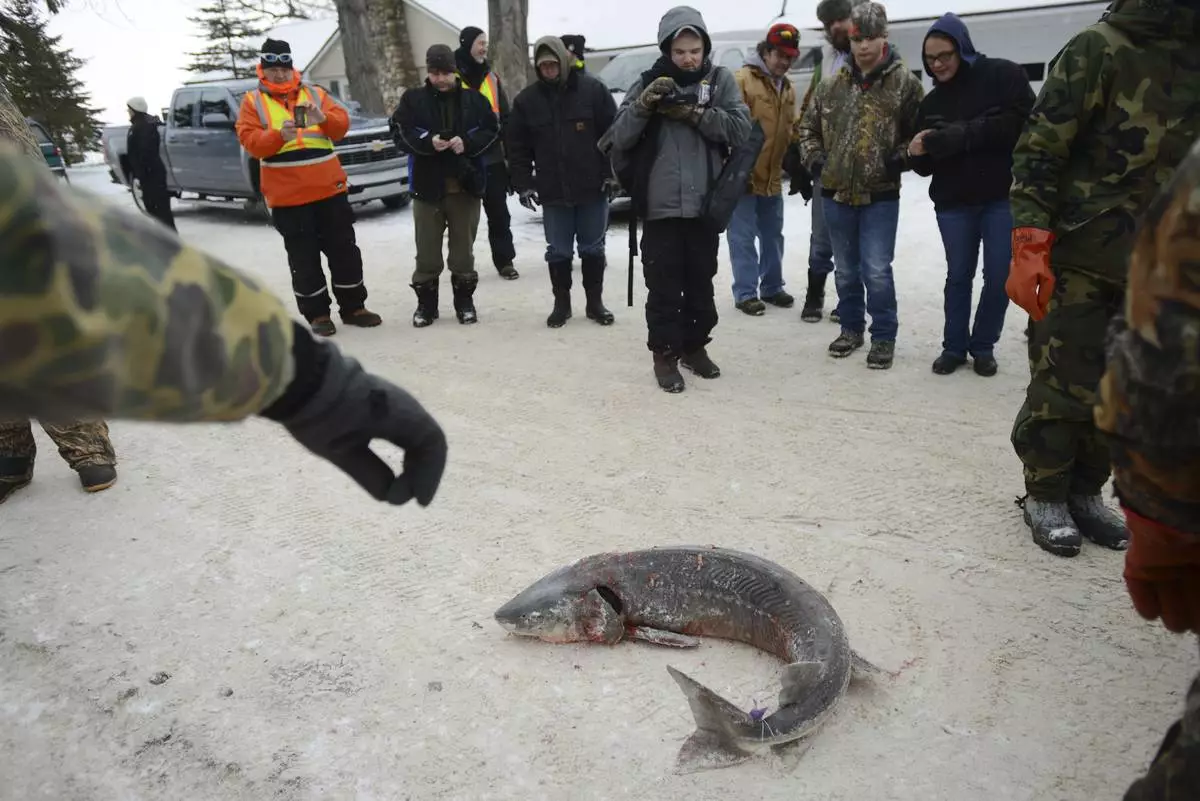
FILE - People gather to look at a lake sturgeon, before it is weighed, near Black Lake in Cheboygan County, Mich., Feb. 4, 2017. Lake sturgeon don't need Endangered Species Act protections, federal wildlife officials announced Monday, April 22, 2024, saying that stocking programs have helped the prehistoric fish return to areas where they had vanished. (Julia Nagy/Lansing State Journal via AP, File)
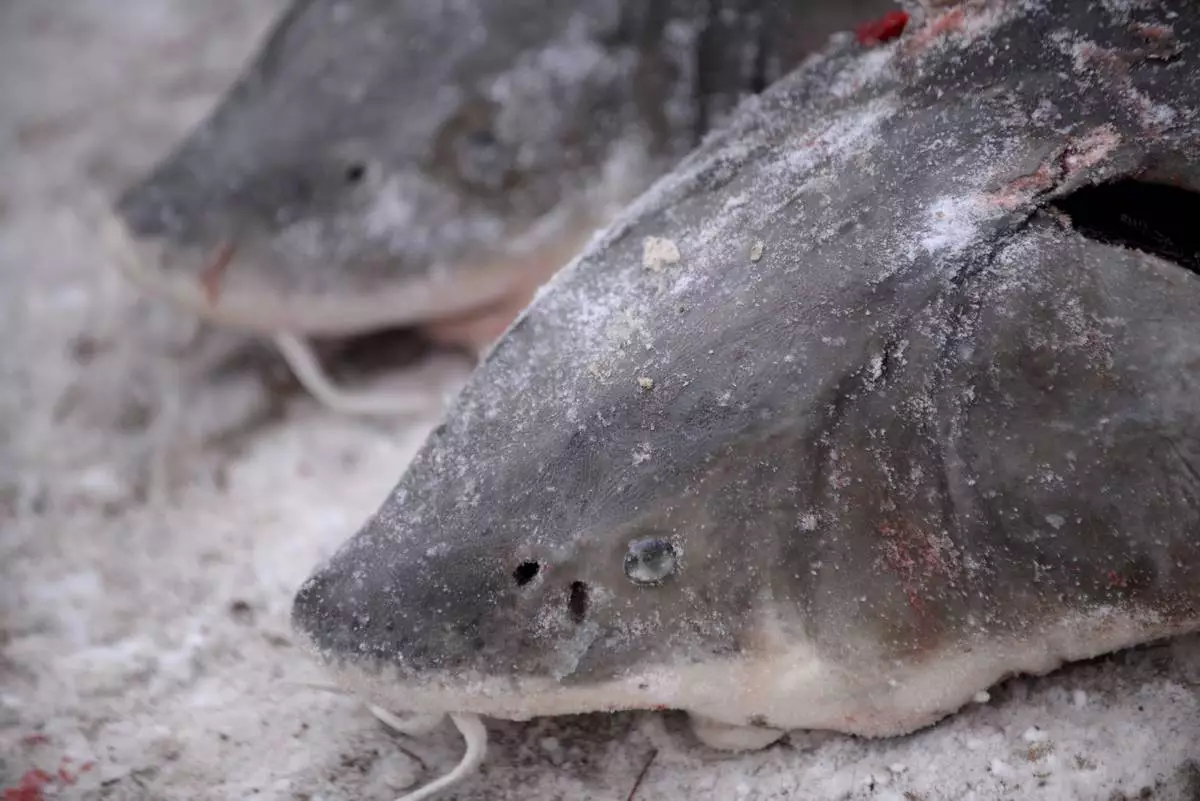
FILE - Two lake sturgeons are set to be weighed near Black Lake in Cheboygan County, Mich., Feb. 4, 2017. Lake sturgeon don't need Endangered Species Act protections, federal wildlife officials announced Monday, April 22, 2024, saying that stocking programs have helped the prehistoric fish return to areas where they had vanished. (Julia Nagy/Lansing State Journal via AP, File)



